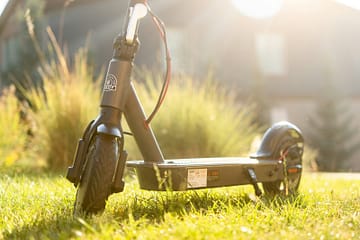An automated plant watering system offers numerous benefits for gardeners and plant enthusiasts. Firstly, it provides a consistent and reliable watering schedule for your plants, ensuring that they receive the right amount of water at the right time. This is especially important for busy individuals who may not have the time to manually water their plants on a regular basis. Additionally, an automated system can help prevent overwatering or underwatering, which are common issues that can lead to plant stress or even death.
Furthermore, an automated plant watering system can help conserve water by delivering precise amounts of water directly to the roots of the plants, minimizing wastage and runoff. This not only saves water but also reduces the risk of water-related diseases and pests that thrive in moist environments. Moreover, by maintaining optimal soil moisture levels, an automated system can promote healthier and more vibrant plant growth, leading to better yields for edible plants and more beautiful blooms for ornamental plants.
Selecting the Right Components for Your Automated Plant Watering System
When selecting components for your automated plant watering system, it’s important to consider the specific needs of your garden and plants. The first key component is a reliable water source, which could be a faucet, rain barrel, or reservoir. From there, you’ll need a timer or controller to schedule watering intervals and durations. There are various types of timers available, including mechanical, digital, and smart timers that can be controlled remotely via a smartphone app.
Next, you’ll need a delivery system to transport water from the source to your plants. This could be in the form of drip irrigation tubing, soaker hoses, or sprinklers, depending on the layout and size of your garden. Additionally, you may want to incorporate sensors or moisture meters to monitor soil moisture levels and adjust watering schedules accordingly. Finally, consider adding a filter or pressure regulator to ensure that the water being delivered is clean and at the right pressure for your plants.
Setting Up Your Automated Plant Watering System: Step-by-Step Guide
Setting up an automated plant watering system can seem daunting at first, but with the right guidance, it can be a straightforward process. The first step is to plan out the layout of your system, taking into account the location of your water source, the types of plants you have, and any obstacles in your garden. Once you have a clear plan in mind, start by installing the timer or controller at your water source and programming it with your desired watering schedule.
Next, lay out the delivery system according to your garden’s layout, making sure to position the tubing or hoses close to the base of your plants. If using drip irrigation, you may need to install emitters or drippers at each plant to ensure even water distribution. For soaker hoses or sprinklers, make sure they are positioned to cover the entire area of your garden. Once the delivery system is in place, test the system to ensure that water is being delivered effectively to all areas of your garden.
After testing, make any necessary adjustments to the layout or components to optimize water distribution. Finally, consider adding sensors or moisture meters to monitor soil moisture levels and make any further adjustments to your watering schedule as needed.
Troubleshooting and Maintaining Your Automated Plant Watering System
Like any system, an automated plant watering system may encounter issues from time to time. Common problems include clogged emitters or hoses, leaks in the delivery system, or malfunctions with the timer or controller. To troubleshoot these issues, start by inspecting the components for any visible signs of damage or blockages. Clean or replace any clogged emitters or hoses, and repair any leaks with waterproof tape or hose repair kits.
If the issue lies with the timer or controller, check the batteries and connections to ensure they are functioning properly. If necessary, reset the programming and reprogram the schedule as needed. Regular maintenance is also key to keeping your automated system running smoothly. This includes checking for leaks or damage to the delivery system, cleaning filters and emitters, and replacing any worn-out components as needed.
Maximizing Efficiency and Water Conservation with Your Automated Plant Watering System
To maximize efficiency and water conservation with your automated plant watering system, consider implementing additional strategies and technologies. For example, mulching around your plants can help retain moisture in the soil and reduce evaporation, allowing you to water less frequently. Additionally, consider incorporating rain sensors into your system to automatically adjust watering schedules based on rainfall.
Furthermore, consider using smart technology such as weather-based controllers that can adjust watering schedules based on real-time weather data. This can help prevent overwatering during periods of heavy rainfall and ensure adequate watering during dry spells. Additionally, consider using drip irrigation or soaker hoses instead of traditional sprinklers to minimize water wastage through evaporation and runoff.
Integrating Smart Technology and Monitoring Tools for Your Automated Plant Watering System
Integrating smart technology and monitoring tools into your automated plant watering system can provide added convenience and precision. Smart controllers can be programmed and adjusted remotely via smartphone apps, allowing you to monitor and control your system from anywhere with an internet connection. Additionally, some smart controllers can integrate with weather data to automatically adjust watering schedules based on real-time conditions.
Furthermore, consider incorporating soil moisture sensors into your system to provide real-time data on soil moisture levels. This can help you fine-tune your watering schedule and ensure that your plants are receiving the right amount of water at all times. Some sensors can even send alerts or notifications to your smartphone when soil moisture levels are too high or too low, allowing you to take immediate action.
Tips for Customizing Your Automated Plant Watering System to Fit Your Garden’s Needs
Customizing your automated plant watering system to fit your garden’s specific needs is essential for optimal performance. Start by considering the types of plants you have and their individual watering requirements. For example, drought-tolerant plants may require less frequent watering than moisture-loving plants.
Additionally, consider the layout of your garden and any unique features that may require special attention, such as slopes or shaded areas. You may need to adjust the layout of your delivery system or incorporate additional components such as pressure regulators or flow control valves to ensure even water distribution.
Finally, consider incorporating additional features such as fertigation systems that can deliver fertilizers along with water, or adding a backup power source such as a battery backup in case of power outages. By customizing your system to fit your garden’s specific needs, you can ensure that your plants receive optimal care and attention throughout the growing season.


